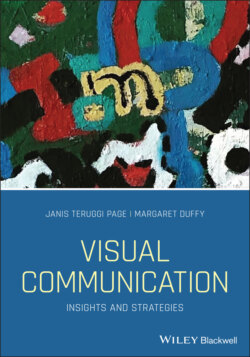Читать книгу Visual Communication - Janis Teruggi Page - Страница 19
Political Persuasion
ОглавлениеImages created to intentionally mislead are increasingly part of the promotional strategies for political candidates and their supporters. In pre‐Internet times, visuals and video, usually on television, played a major role in positioning candidates and their opponents. Political consultants have frequently harnessed the power of the visual because human beings are able to quickly interpret and process those messages. Early on, researchers found that in news coverage and advertisements, visual elements overwhelmed verbal elements. In 1988, an ABC news correspondent, Richard Threlkeld, voiced a spot that was aimed at discounting the claims of a George H.W. Bush presidential ad called “Tank Ride.” The piece showed the visuals of the ad as the reporter's voiceover detailed the false claims it made. However, research revealed that people who saw it tended to ignore the verbal statements and internalize the message of the original ad. An intentional alteration of images in an ad from President George W. Bush's 2004 campaign was digitally enhanced to add images of soldiers into a crowd he was addressing. After criticism, the campaign withdrew the ad.
Another questionable use of images is found in a web video by the Democratic National Campaign that used a dramatization of a man in a business suit pushing an elderly woman in a wheelchair off a cliff as a way to attack Republican Congressman Paul Ryan's proposed plan for health care reform (Raposa, 2012). While no one was likely to believe that Ryan's plan would literally involve throwing old people from high places, the powerful visuals coupled with a soundtrack of “America the Beautiful” nevertheless sent a deceptive message about the possible effects of Ryan's plan. As we examine many media artifacts, we can see the power of visual metaphors – in this case, a policy change – equated to a violent act against a helpless and vulnerable person.
Political persuasion has always drawn on popular culture and the conventions of films and other audiovisual devices. You've probably noticed that negative political ads (NPAs) tend to present opponents using dramatic conventions drawn from horror movies or crime dramas because viewers find it easy to understand and connect with those conventions. For example, often opponents will be portrayed accompanied by dark atmospheric visual effects, unflattering images, and scary or ominous music. YouTube, Facebook, and scores of other social networks provide low cost ways to distribute content beyond television programming.
